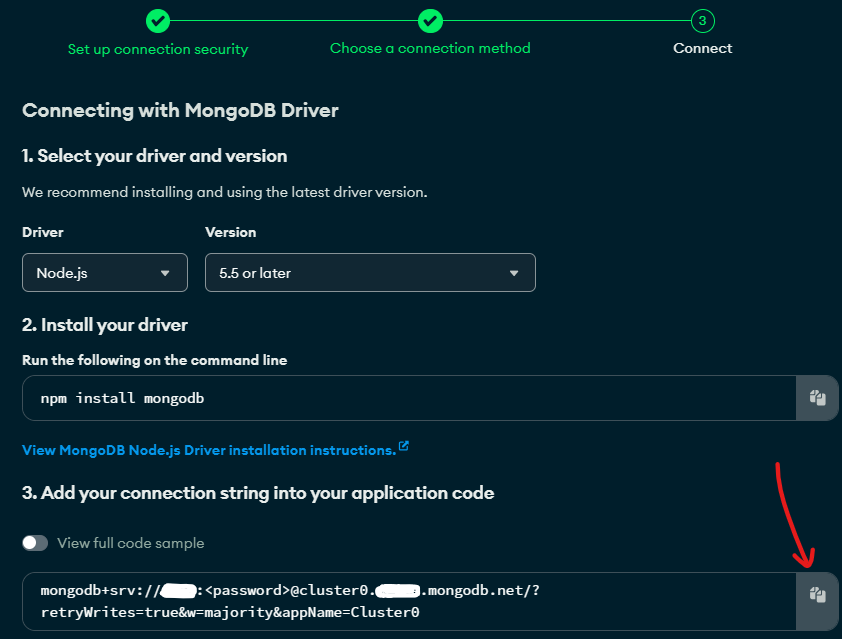A Next.js app that uses Shadcn, Prisma ORM, MongoDB and Next Auth
To update the dependencies to their latest versions, run:
./scripts/update-deps.sh
You need to pass an env. variable with the MongoDB connection string, as well as any variables required by next-auth:
MONGO_URI=
NEXTAUTH_SECRET=
GOOGLE_APP_CLIENT_ID=
GOOGLE_APP_CLIENT_SECRET=
NEXTAUTH_URL=
How to get these variables?
The connection string looks something like this:
mongodb+srv://<user>:<password>@cluster0.<org>.mongodb.net/<database_name>?retryWrites=true&w=majority
In your cluster, click Connect:
Under the Connect your application section, click Drivers:
Click the Copy button next to the connection string:
Replace <password> with the password for your user. Ensure any option params are URL encoded.
Use your preferred tool to generate the NEXTAUTH_SECRET hash:
Using This tool is the quickest way to generate a hash. You can change the last segment of the url to get a hash of your preferred length, such as https://generate-secret.vercel.app/44
OpenSSL :
openssl rand -base64 32Urandom :
head -c 32 /dev/urandom | base64Python :
import base64
import os
random_bytes = os.urandom(32)
base64_string = base64.b64encode(random_bytes).decode('utf-8')
print(base64_string)JavaScript :
const crypto = require('crypto')
const randomBytes = crypto.randomBytes(32)
const base64String = randomBytes.toString('base64')
console.log(base64String)You can add those variables to a .ENV file (don't forget to add it to your .gitignore file!)
Related documentation:


